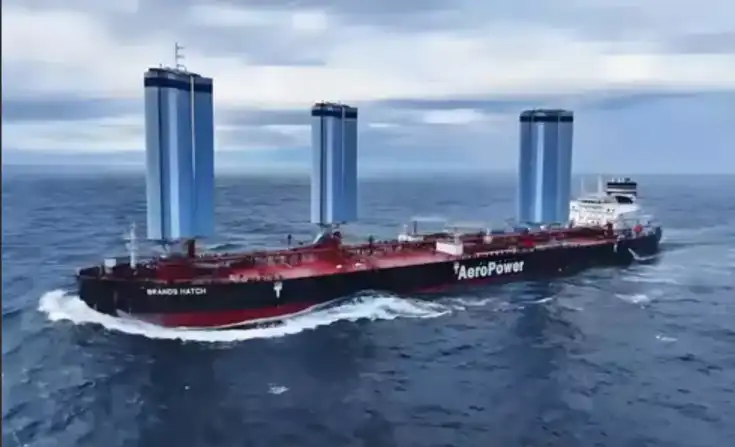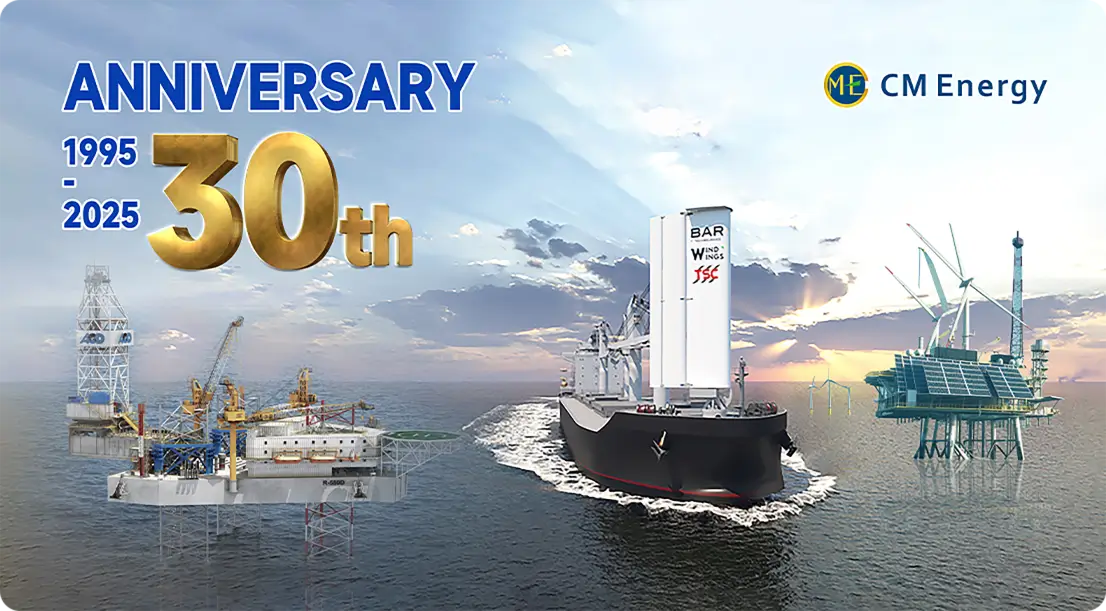Global WAPS supply chain: Current status and challenges
The global supply chain for Wind-Assisted Propulsion Systems (WAPS) is experiencing rapid growth, driven by stricter environmental regulations and the shipping industry’s push to reduce carbon emissions. The current status, however, is marked by a nascent market structure and several significant challenges.
WAPS Technology Providers
The global supply chain for Wind Power Propulsion systems has seen significant growth in recent years. Several companies, including TSC, have entered the market with innovative WAPS solutions. These technologies range from rigid sails to rotor systems, each offering unique benefits for different vessel types. The increasing number of providers has improved the availability of WAPS technologies, giving shipowners more options to choose from.
Manufacturing Capacity
As demand for WAPS technologies grows, manufacturers are scaling up their production capabilities. This expansion is crucial to meet the needs of the shipping industry as it transitions towards more sustainable propulsion methods. However, challenges remain in terms of raw material supply and specialized component production. Some manufacturers are forming partnerships with suppliers to ensure a steady flow of materials and components.
Distribution Networks
The distribution of WAPS technologies is gradually improving, with manufacturers establishing global networks to serve clients worldwide. TSC, for instance, has expanded its presence in key shipping hubs to provide better access to its products. Despite these advancements, some regions still face limitations in terms of local availability and support services.
Emerging Technology Landscape and Specialised Manufacturing
The WAPS market is still maturing, with various technologies competing for dominance. This diversity requires highly specialized manufacturing facilities and expertise. The supply chain is currently fragmented, often reliant on a limited number of original equipment manufacturers (OEMs), primarily located in Europe and Asia. This concentration poses risks related to single-source dependencies and geographical disruptions.
Logistical Complexities and Installation Challenges
The components of WAPS—especially large, non-standard items like massive rotor sails or rigid wings—present unique logistical hurdles. Their size necessitates specialized handling, transport, and port logistics, which is further complicated by port congestion and limitations in global freight capacity.
Talent Shortage and Regulatory Compliance
A major non-material challenge is the shortage of a skilled workforce. The design, manufacturing, installation, maintenance, and optimal operation of modern WAPS require personnel with expertise in naval architecture, aerodynamics, automation, and complex digital systems. This 'talent gap' slows down the scaling of production and service capabilities.
Training programs: Bridging the WAPS installation skills gap
Specialized Training Initiatives
To address the shortage of skilled WAPS installers, various training programs have been developed. These initiatives aim to equip technicians with the necessary knowledge and skills to install and maintain wind assisted propulsion systems. Some WAPS manufacturers, including CM Energy, offer their own training programs to ensure proper installation and operation of their products.
Partnerships with Educational Institutions
Collaborations between WAPS providers and maritime academies are becoming more common. These partnerships help integrate WAPS technology into existing maritime engineering curricula, preparing the next generation of professionals for the growing demand in this field. Such programs often combine theoretical knowledge with practical, hands-on experience.
On-the-Job Training
Many shipyards and installation service providers are implementing on-the-job training programs. These initiatives allow experienced technicians to mentor newcomers, passing on valuable skills and knowledge. This approach helps bridge the immediate skills gap while building a sustainable workforce for the future.
Future outlook: Scaling up WAPS manufacturing and services
Technological Advancements
The future of WAPS manufacturing looks promising, with ongoing research and development aimed at improving efficiency and reducing costs. Innovations in materials science and aerodynamics are expected to enhance the performance of Wind Power Propulsion systems. These advancements will likely lead to more effective and easier-to-install WAPS solutions, further increasing their availability and appeal to shipowners.
Expanding Production Facilities
As demand for WAPS technologies continues to grow, manufacturers are planning to expand their production facilities. This scaling up of manufacturing capacity will help meet the increasing global demand and potentially reduce costs through economies of scale. TSC, for example, is investing in new production lines to boost its output of WAPS components.
Global Service Networks
To support the growing number of vessels equipped with wind assisted propulsion systems, service networks are being established worldwide. These networks will provide maintenance, repair, and upgrade services, ensuring the long-term viability of WAPS technologies. The development of these service networks is crucial for the widespread adoption of WAPS in the maritime industry.
Conclusion
The availability of WAPS technologies and skilled installation services is steadily improving, driven by increasing demand and industry investment. While challenges remain, particularly in terms of skilled workforce development, the outlook is positive. As manufacturing scales up and training programs expand, we can expect WAPS to become more accessible and widely adopted in the coming years. This growth will play a significant role in the maritime industry's transition towards more sustainable and efficient shipping practices.
Harness the Power of Wind with CM Energy's WAPS Solutions
As a leading wind assisted propulsion system manufacturer, CM Energy offers cutting-edge WAPS technologies designed to significantly reduce fuel consumption and emissions. Our wind assisted propulsion system, with its patented three-element rigid sail design, provides unmatched efficiency and reliability. Experience the future of sustainable shipping with CM Energy's innovative solutions. Contact us today at info.cn@cm-energy.com to learn how we can help optimize your fleet's performance and environmental footprint.
References
- International Wind Propulsion Association. (2023). "Global WAPS Market Report 2023."
- Maritime Technology Journal. (2024). "Advancements in Wind Assisted Propulsion Systems for Commercial Shipping."
- Green Shipping Initiative. (2023). "Skills Gap Analysis in WAPS Installation and Maintenance."
- Lloyd's Register. (2024). "Future of Wind Propulsion in Maritime Industry: Outlook 2030."
- Journal of Sustainable Maritime Transportation. (2023). "Scaling Up WAPS Manufacturing: Challenges and Opportunities."
- International Maritime Organization. (2024). "WAPS Technology Adoption Rates and Installation Service Availability."


